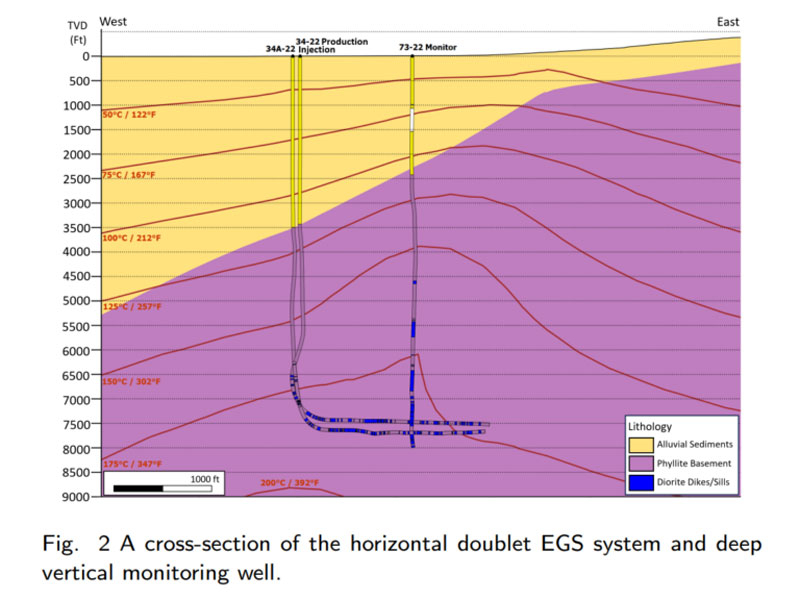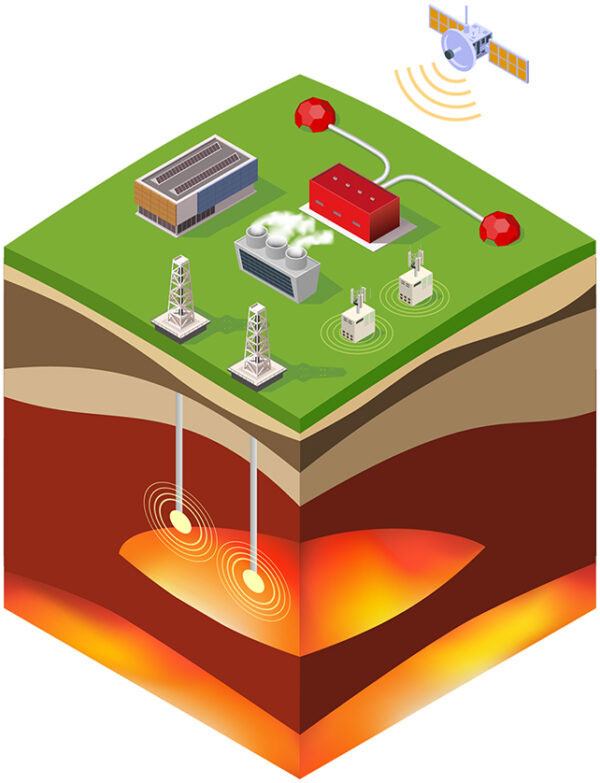New drilling methods and advanced technologies for extracting heat from the Earth’s interior promise to quickly make geothermal energy a competitive player in the electricity generation market, US scientists are confident. This will happen rapidly – in just a couple of years. Forecasts say that by 2027 the cost of generating electricity using the heat of the planet’s interior will be equal to the cost of today’s electricity “from the socket”.

Google’s Geothermal Power Plant. Image Credit: Google
The EGS talk was presented by industry leader Roland Horne, professor of energy and engineering at Stanford University. He began by noting that historically, access to geothermal energy has been tied solely to geographic factors. Conventional geothermal power plants require hot, permeable rock and large amounts of underground fluid, which is typical in places with recent volcanic activity, such as Japan, New Zealand, the Philippines, Kenya, El Salvador, Iceland, and the western United States.
But that was in the past. Over the past 50 years, oil companies have developed drilling and fracking techniques that have opened up access to heat from deep within the earth across much of the planet, not just near volcanoes. While only a few companies have taken advantage of the new technologies, they hold enormous potential for producing electricity on a large scale. Today, geothermal energy still accounts for less than half a percent of global power. Solar and wind power account for more than 25 times more, a figure that can be remedied in the foreseeable future.
Accessing underground heat requires using drilling techniques developed for shale gas, including horizontal drilling and hydraulic fracturing. By pumping fluid into wells at high pressure, oil workers widen existing cracks in the rock and create new ones, forcing oil and other fluids to the surface. In enhanced geothermal systems, the fluid is simply hot water from natural underground reservoirs.

Other adapted techniques include drilling multiple wells from a single site to improve efficiency and reduce costs. Synthetic diamond drill bits that can penetrate hard rock efficiently have also proven critical, allowing a new geothermal well to be completed in weeks rather than months. “Speeding up drilling has a huge impact on the overall economics of EGS,” he explained.
According to calculations, higher drilling rates could make geothermal systems competitive with onshore electricity generation in much of the United States by 2027, which is currently about $80 per MWh.
In California, which currently gets about 5% of its electricity from geothermal sources, the authors estimate that EGS could increase geothermal capacity tenfold to 40 GW by 2045, replacing fossil fuels as baseload generation. EGS would thus complement intermittent renewables such as wind and solar, and improve the stability of a carbon-free energy system.
But there is one thing that must be taken into account. As with hydraulic fracturing for oil and gas, crushing deep rock to access geothermal reservoirs can cause earthquakes. To reduce the risk of disasters, the professor recommends not drilling in areas where the risk of earthquakes is high and where there are faults in the earth’s crust. Drilling should also be done with caution and work should be stopped whenever seismic events exceed a certain level. If the shaking is not strong, work can continue.

Another way to avoid earthquakes at drilling sites could be to gently inject water for fracking — not at high pressure, but at much lower pressure. “Injecting fluid gradually, rather than using a high-pressure jet, could significantly reduce the risk and magnitude of induced seismic activity,” Horne said.
The scientist and his colleagues hope that the new study will serve as an incentive for further research and development of EGS as a sustainable and reliable energy source. “EGS could be a game changer for clean energy production not only in California, but throughout the U.S. and around the world,” Horn said. “Safely harnessing the Earth’s internal heat could have a significant impact on our energy future.”